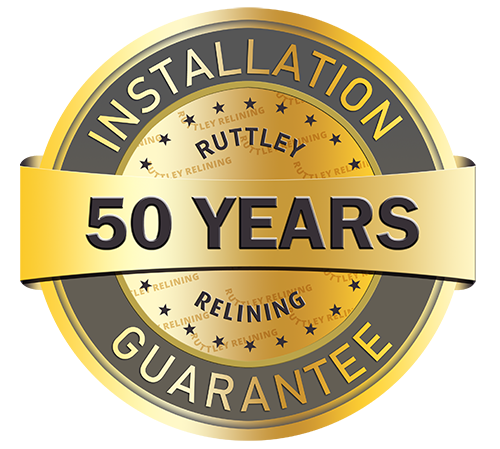
When it comes to drain and storm water pipes, it can be a very time consuming and expensive process excavating these to replace any sections that have been damaged over time from tree roots and other obstructions.
Depending on the extent of the damage, pipe relining is often a faster and more cost-effective process than pipe replacement. We’ve outlined the steps involved in pipe relining below so you can see why this may be a smarter option for fixing your pipes than excavation and replacement.
Step 1
Before a pipe can be relined, it’s important to assess the extent of the damage that’s been done to the pipe by inserting a drain camera.The drain camera is fed into the pipeline until it reaches the damaged sections, accurately identifying and isolating any blockages.
Step 2
After the drain camera has located the damaged section/s of pipe and identified the presence of blockages which have caused this issue, a robotic cutter is used to remove these.The robotic cutter is powerful enough to cut through steel, concrete and tree roots, making it ideal for clearing any blockages.
Step 3
Once any blockages have been cut out of the damaged sections of pipe, a water jetter is inserted into the pipe to flush out any remaining dirt, roots or sediment that haven’t been removed during the cutting process.
Step 4
After the pipe is cleared using the robotic cutter and water jetter, the drain camera is once more fed into the pipe to check if all of the blockages are gone and accurately determine the length of the sections that need to be relined.
If this final assessment reveals that the pipe is all clear, then it’s time to prepare the lining.
Step 5
The lining is measured and cut to fit the lengths required for the damaged sections of pipe. It’s then filled with an epoxy resin that’s been mixed with a hardening agent and rolled along the length to evenly cover and impregnate the liner.
Step 6
After it’s filled, the liner is blown into the pipe using a specialised inverter drum and compressed air is applied to the liner until it reaches the damaged section of pipe.In conjunction with moving the liner to the damaged section of pipe, the inverter drum also blows the liner inside out so that the resin sits on the outside and sticks to the pipe walls, where it’s left to cure and harden.
Step 7
The final step of this process involves using a drain camera and leak detection equipment to check if the new liner has fully sealed the pipe.If no leaks are identified, the pipe is ready to use.
At Ruttley Reliningwe follow the Australian and New Zealand Standard AS/NZ2566.1 for pipe relining, so you’re assured strict quality controls are maintained. If you have damaged pipes that need relining, contact us today.
When it comes to drain and storm water pipes, it can be a very time consuming and expensive process excavating these to replace any sections that have been damaged over time from tree roots and other obstructions.
Depending on the extent of the damage, pipe relining is often a faster and more cost-effective process than pipe replacement. We’ve outlined the steps involved in pipe relining below so you can see why this may be a smarter option for fixing your pipes than excavation and replacement.
Step 1
Before a pipe can be relined, it’s important to assess the extent of the damage that’s been done to the pipe by inserting a drain camera.The drain camera is fed into the pipeline until it reaches the damaged sections, accurately identifying and isolating any blockages.
Step 2
After the drain camera has located the damaged section/s of pipe and identified the presence of blockages which have caused this issue, a robotic cutter is used to remove these.The robotic cutter is powerful enough to cut through steel, concrete and tree roots, making it ideal for clearing any blockages.
Step 3
Once any blockages have been cut out of the damaged sections of pipe, a water jetter is inserted into the pipe to flush out any remaining dirt, roots or sediment that haven’t been removed during the cutting process.
Step 4
After the pipe is cleared using the robotic cutter and water jetter, the drain camera is once more fed into the pipe to check if all of the blockages are gone and accurately determine the length of the sections that need to be relined.
If this final assessment reveals that the pipe is all clear, then it’s time to prepare the lining.
Step 5
The lining is measured and cut to fit the lengths required for the damaged sections of pipe. It’s then filled with an epoxy resin that’s been mixed with a hardening agent and rolled along the length to evenly cover and impregnate the liner.
Step 6
After it’s filled, the liner is blown into the pipe using a specialised inverter drum and compressed air is applied to the liner until it reaches the damaged section of pipe.In conjunction with moving the liner to the damaged section of pipe, the inverter drum also blows the liner inside out so that the resin sits on the outside and sticks to the pipe walls, where it’s left to cure and harden.
Step 7
The final step of this process involves using a drain camera and leak detection equipment to check if the new liner has fully sealed the pipe.If no leaks are identified, the pipe is ready to use.
At Ruttley Reliningwe follow the Australian and New Zealand Standard AS/NZ2566.1 for pipe relining, so you’re assured strict quality controls are maintained. If you have damaged pipes that need relining, contact us today.

